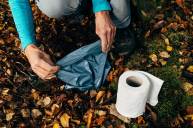A popular hiking spot may be secretly radioactive. An independent researcher is claiming that radioactive waste is contaminating the spot. That spot is Acid Canyon in New Mexico.
The U.S. government denies that there's anything radioactive about the area. Acid Canyon is located in Los Alamos. This was also where America perfected its first atomic bombs. North Arizona University scientist Michael Ketterer says there are "extreme concentrations" of plutonium in the area. In particular, he says the plants, soil, and even the water is radioactive.
"This is one of the most shocking things I've ever stumbled across in my life," Ketterer told the Guardian. He compared the popular hiking spot to the Ukrainian city of Pripyat. That city's citizens abandoned it after Chernobyl spewed up radioactive waste. Ketterer said he took samples at the popular hiking spot in July.
"It's just an extreme example of very high concentrations of plutonium in soils and sediments. Really, you know, it's hiding in plain sight," he said. "This is an unrestricted area. I've never seen anything quite like it in the United States."
Popular Hiking Spot Radioactive?
Ketterer knows his stuff. He spent decades studying nuclear activity. As for Acid Canyon, it was once the dump site for radioactive waste starting from the early days of the Manhattan Project until 1964.
Acid Canyon earned its name from about two decades worth of radioactive waste that was dumped there from the start of the Manhattan Project during World War II through weapons research conducted in the area until 1964. Two years later, the US Atomic Energy Commission began to decontaminate the area. In 1984, they declared it safe to visit, and it became a popular hiking spot.
Ketter's findings have a far-reaching effect. He believes that radioactive waste could run off into the Rio Grande. That could then affect the food supply as well. However, the Department of Energy rebuked Ketterer's findings. They say the levels of radioactivity are safe.
However, Ketterer claims that you can't simply decontaminate a radioactive area.
It really can't be undone," Ketterer said. "It's kind of like trying to pick up salt that's been thrown into a shag carpet. It's crazy to think you're going to get it all."




